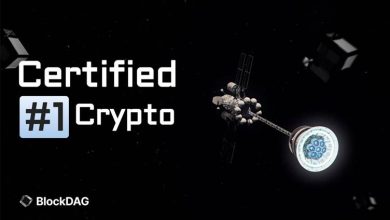Ashley Crepsac Discusses His Approach to Successful SDLC Methodology

Ashley Crepsac is a software engineer with two decades of experience and throughout his career, he has honed in on adhering to and refinding the software development life cycle (SDLC).
The SDLC refers to the cost-effective and time-efficient process leveraged by software development teams to design and build high-quality software.
“I’ve built software for enterprises that have generated over $5 billion in transactions with millions of daily transactions, and that demands a secure and stable environment with 99.9% uptime,” says Ashley Crepsac.
These demands within the software engineering space have made it necessary for Crepsac to build highly-motivated and technically competent teams that adhere to the software development life cycle, but also remain agile enough to adapt to changes.
“Alongside technical knowledge, resilience is a quality that you’ll need throughout the lifecycle. The ability to adapt to unforeseen changes, to pivot and to bounce back is what will set your team apart from the rest and allow you to move the needle forward,” says Crepsac.
The SDLC is important because it helps teams adapt to the various challenges faced when developing software. There are many technology upgrades that might be on the horizon, the space requires constant cross-functional collaboration between teams and it has many moving pieces.
The SDLC methodology provides a systematic and manageable approach to meet the specific deliverables of the software development process, keeping stakeholders happy, goals aligned and also addressing any challenges at the outset.
Some benefits of the SDLC include increased productivity as well as visibility of the software development process for all stakeholders involved. In addition, estimation of the entire lifecycle becomes foreseeable and more accurate.
“It helps a lot with planning and scheduling,” says Crepsac.
“There’s improved risk management and cost estimation as well as systematic software delivery and better customer satisfaction.”
“The SDLC process,” Crepsac outlines, “is not a one-size-fits-all framework. It varies among different teams, and every team might approach it in a slightly different way, yet there are definitely common phases most stick to.” Ashley Crepsac says these phases include Planning, Design, Implementation, Testing, Deployment, and Maintenance, each serving a unique and deliberate purpose in the lifecycle of software development.
Most start with the Planning phase.
“This initial stage is crucial,” says Crepsac. “It’s where we conduct a cost-benefit analysis, schedule the project, estimate resources, and allocate them.”
It’s then important to engage with stakeholders ranging from customers and these can range from internal and external experts. Developers usually take it upon themselves to gather requirements to craft a Software Requirement Specification document.
“This document is important and must be done properly,” says Crepsac. He goes on to say that it sets the expectations and defines common goals, which will eventually pave the way for a meticulously planned software development journey.
The conversation then shifts to the Design phase, where Crepsac emphasizes the importance of analytics. “This is the phase where we dissect the requirements and brainstorm solutions. This can range from integrating pre-existing modules to selecting the right technology, and this phase shapes the future of the software.”
It’s important to consider how new software will blend into the existing IT infrastructure, and to highlight how that might happen.
To explain the Implementation phase, Crepsac describes it as the phase where all the coding magic happens.
“By breaking down the requirements into smaller, manageable coding tasks, we can work towards the final product in a steady way,” he says. This phase is intricate and process-driven. It’s the development team’s job to translate planning and design into tangible results.
As a side note, Crepsac says that communication skills are extremely important in the field of software development and engineering.
“There’s often a stereotype tossed around that software engineers work on coding all day and aren’t proficient in communication, but that’s far from the truth. You need to develop your communication skills to lead your team and to keep stakeholders happy,” says Crepsac.
Moving on, Crepsac says the Testing phase is presented as a dual effort of automation and manual scrutiny and it’s designed to ensure the software’s quality.
“Quality analysis is non-negotiable, especially at the enterprise level” Crepsac says.
“Remember the expectation of 99.9 percent uptime? That takes skill and rigor.”
“It’s about making sure the software is bug-free and meets the customer’s expectations.” Ashley Crepsac says it’s important to run the Testing phase to ensure that refinement down the line can happen without any hiccups.
Deployment approaches the final phases, and it’s a critical transition from development to real-world application. “It’s often the most exciting part,” says Crepsac.
“It involves moving the latest build to the production environment, and it’s a process that includes packaging, configuring, and installing.” This phase is there to make sure that the software remains accessible to users, even amidst upgrades or changes, and that’s something I’ve been successful with historically.
Lastly, Maintenance is portrayed as an ongoing commitment to excellence – timeliness, functionality and user-friendliness. “Beyond fixing bugs, this phase is committed to improving system performance, increasing security, and refining user experience,” says Crepsac.
Ashley Crepsac has broken down the layered complexity of the SDLC and made it accessible to audiences worldwide, and you can learn more on his software engineering website.
Highlighting Ashley Crepsac’s vital role in the field of software engineering and development, he says that his insights not only shed light on the process but also shine a light on the strategic planning that goes into the creation of robust and reliable software applications.
If you’re interested in a deeper dive, Ashley Crepsac mentions that there are other SDLC models like Waterfall, Spiral, Iterative and Agile frameworks that you can implement to approach the software development lifecycle.
“That’s all for now though,” says Crepsac, who attests that he can talk about software development all day.




